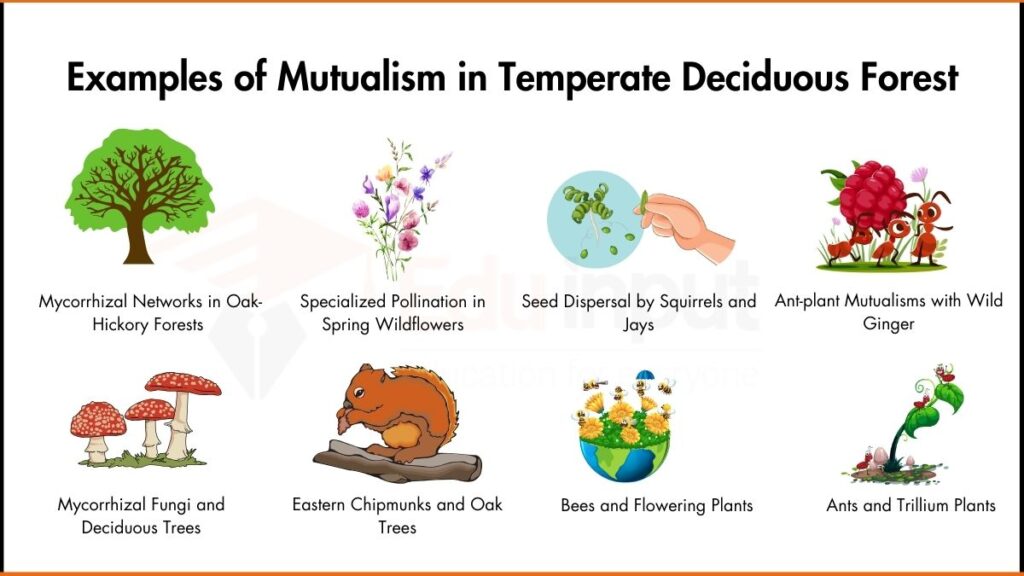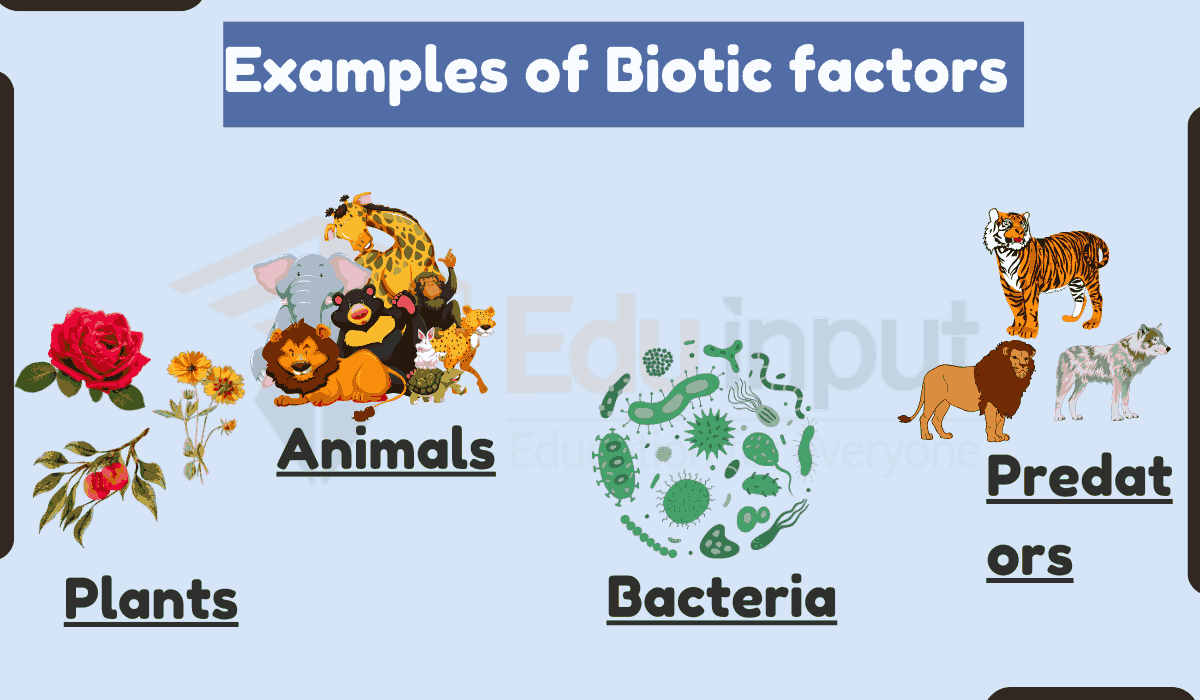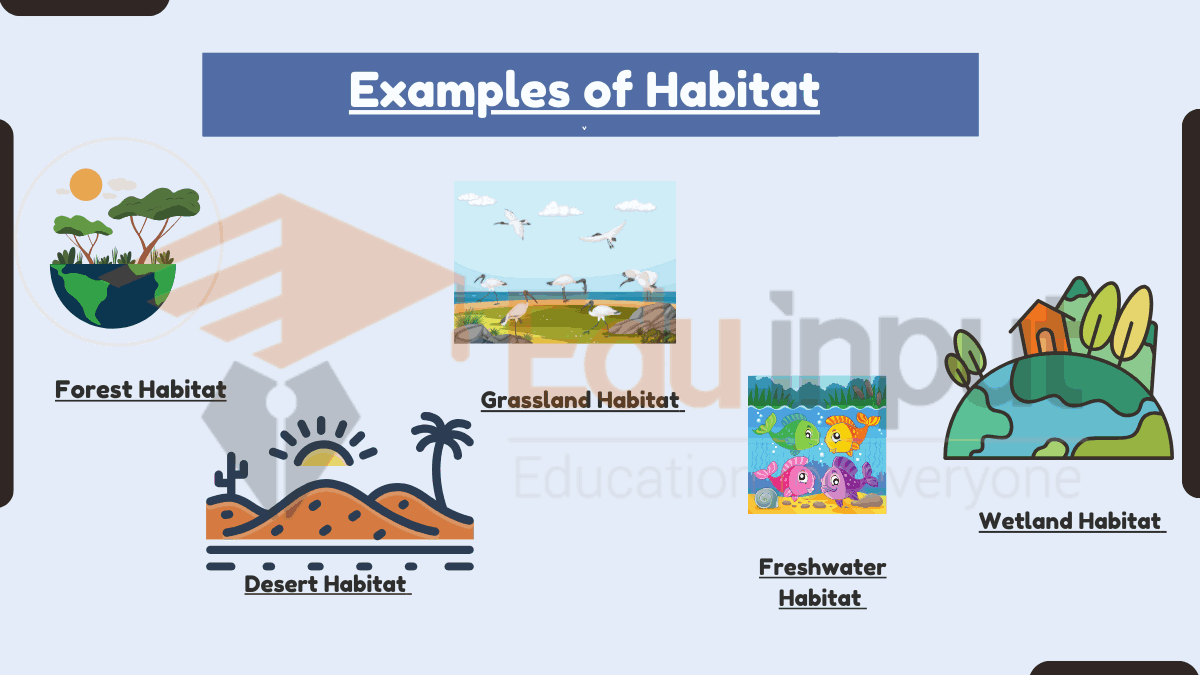10 Examples of Mutualism in Temperate Deciduous Forest
Temperate deciduous forests rely on mutualistic relationships for survival. Plants and animals work together to support each other. Fungi help trees get nutrients, while animals spread seeds. These partnerships promote forest growth and biodiversity.
References: [1] [2] [3] [4] [5] [6] [7] [8] [9] [10]

Example Of Mutualism In Temperate Deciduous Forest
Here are some common examples of mutualisms in Temperate Deciduous Forest:
1. Mycorrhizal Networks in Oak-Hickory Forests
Ectomycorrhizal fungi, like Tuber and Amanita, connect oak and hickory roots. These fungi extract phosphorus from the soil and transport it to trees. In return, trees provide sugars to the fungi. This partnership improves resource sharing, seedling growth, and forest resilience. Studies show that mycorrhizal fungi play a significant role in nutrient cycling and forest productivity.
2. Specialized Pollination in Spring Wildflowers
Spring wildflowers, such as trout lilies, depend on bumblebees for pollination. Bees, especially queens, emerge from hibernation in spring to collect nectar and pollen from the flowers. Trout lilies provide essential food for bees, and bees ensure the flower’s successful pollination. Specialized pollination is vital for both plant and pollinator reproductive success, which is shown in recent studies on bumblebee pollination services.
3. Seed Dispersal by Squirrels and Jays
Squirrels and blue jays help disperse acorns from oak trees. They collect acorns, store them, and often forget about some. These forgotten acorns later germinate into new oak trees. This natural process aids oak tree regeneration by spreading seeds to new areas. Research highlights how small mammals, like chipmunks and jays, play an important role in seed dispersal and forest regeneration.
4. Ant-plant Mutualisms with Wild Ginger
Wild ginger has a mutualistic relationship with ants. The plant produces seeds with elaiosomes, which attract ants. Ants carry the seeds to their nests, consume the elaiosomes, and leave the seeds behind in new locations. This benefits wild ginger by spreading its seeds effectively. Ant-mediated seed dispersal is essential for many temperate forest plants, including wild ginger, as supported by studies in Functional Ecology.
5. Mycorrhizal Fungi and Deciduous Trees
Mycorrhizal fungi, like those in oak and maple forests, connect with tree roots to extract nutrients, such as phosphorus and nitrogen, from the soil. In exchange, trees provide sugars from photosynthesis to the fungi. This relationship boosts tree growth and survival, especially in nutrient-poor soils. Research from Nature and Ecology Letters shows that mycorrhizal fungi enhance forest productivity and nutrient cycling in deciduous ecosystems.
6. Eastern Chipmunks and Oak Trees
Eastern chipmunks feed on acorns produced by oak trees. They store acorns for later use but often forget about some, allowing those acorns to germinate. This process helps oak trees by dispersing their seeds to new locations. Chipmunks play a crucial role in seed dispersal and forest regeneration, as shown in studies published in The American Naturalist.
7. Bees and Flowering Plants
Bees collect nectar from flowering plants like wildflowers and shrubs, while transferring pollen between flowers. This pollination process is vital for plant reproduction. Bees gain food from nectar, while plants benefit by producing seeds. Pollination studies confirm that bees are critical to the reproductive success of many understory plants in deciduous forests.
8. Ants and Trillium Plants
Ants assist trillium plants by dispersing their seeds. The seeds have elaiosomes that attract ants. Ants carry the seeds back to their nests, eat the elaiosomes, and leave the seeds in new spots where they can germinate. Research shows that ant-mediated seed dispersal is essential for the growth of trillium and other forest wildflowers.
9. Birds and Insect Control
Birds like woodpeckers and warblers feed on insects that infest trees. This benefits the birds by providing food and helps trees by reducing herbivory damage. Fewer insects lead to healthier trees that grow and survive better. Studies in Ecological Applications demonstrate how insectivorous birds play a key role in controlling pests in temperate forests.
10. Lichens (Fungi and Algae)
Lichens are a partnership between fungi and algae or cyanobacteria. The algae perform photosynthesis, providing food for both organisms, while fungi protect the algae and help them access nutrients. Lichens contribute to nutrient cycling by breaking down organic material on trees or rocks. Research shows lichens serve as bioindicators of air quality in temperate forests.





Leave a Reply